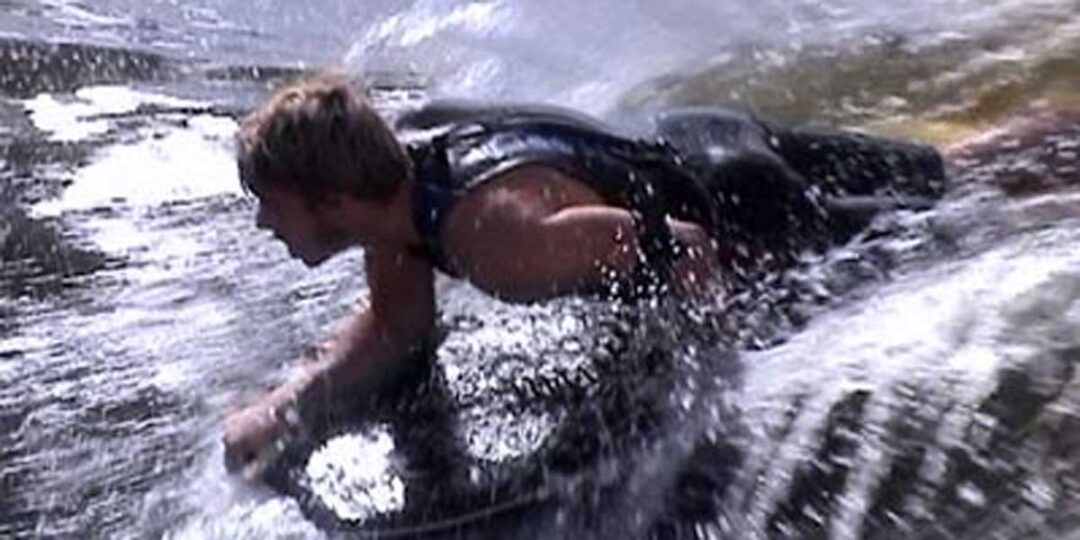Circa, February 2001
The stink hit you before you could see it. It was a festering smell, as if someone had foolishly carpeted the floor of a pub toilet. The water was black and shiny like a model’s hair in a Sunsilk ad and not very inviting, but it’s not every day you get to ride a standing wave in Wamberal.
In the second week of February, it had rained without stopping for five days on the New South Wales central coast. It had been five whole days and nights of going nuts, listening to the patter patter patter on the tin roof and not a wave to be had. It had been five days of water running off the roof, down the gutters, then down the driveways into the stormwater drains and finally into the Wamberal Lagoon.
By Wednesday, the water was lapping at the base of the trees and threatening to invade the car park. By 9.30am Thursday morning, with the level of the lagoon nine foot higher than the sea, it had broken through.
As thousands of litres of water tried to push its way out to sea like the plug had been pulled out of a giant bathtub, the fun began. Despite the smell, the jet-black water and the local lifeguards roping off the crumbling sides of the mouth, a small crowd formed to watch the brave few who were up for the rare ride.
Risking Hep A, B, C and unknown super strains that had been brewing in the murky depths of the lagoon mud bottom, five or six guys clambered down the sides and pushed out into the fast flowing torrent. The waves moved from one side of the opening to the other as the escaping water changed direction and produced a pretty constant two-foot wave for over an hour. The crowd on the dissolving banks held their noses and watched as the boys carved up waves that looked like they were made of pure crude oil.
As well as sludge-bred super bugs, the current was doing its best to carry the guys who lost it far out to sea. The lifeguards stood as a point of no return to pluck out anyone who didn’t manage to paddle to the disintegrating banks before the shoreline. On the up side, the current was also dumping tons of sand and silt at the mouth. As the flow slowed and the standing wave got too small to surf, attention shifted to the increasing swell pitching on the newly formed bank.
The next day, five days of waiting was rewarded with a clean break on either side of the mouth to the empty Wamberal Lagoon.




No Comments